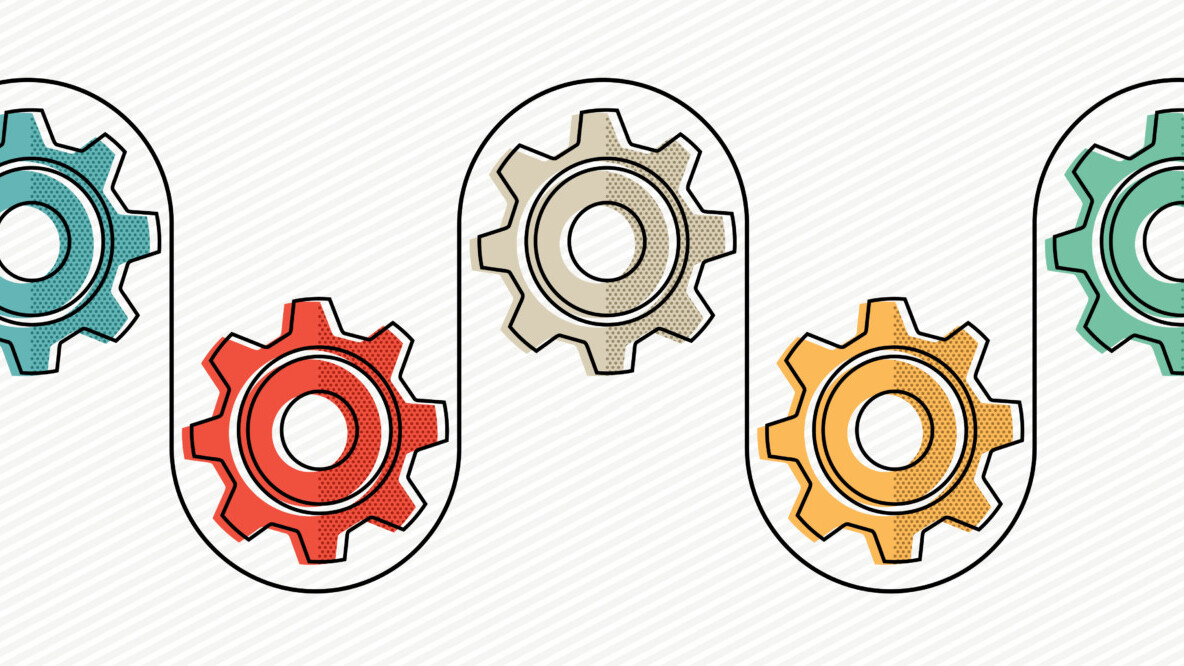
Design has evolved beyond making objects – organizations now want to learn how to think like designers, and apply design principles to the workplace itself.
One company at the forefront of this methodology is Philips.
Few globally reaching product companies have a 126-year history, and even fewer have their roots in design-centered thinking for as long as Philips. In fact, Design at Philips has evolved to touch almost every aspect of their business, from shaping end-to-end product development to creative decision-making, with design.
TNW spoke with Philips Chief Design Officer, Sean Carney, about a few of the ways Philips approaches design thinking, and how to implement the same strategy into your business.
Create a team as diverse and international as the clients you serve

Navigating the team dynamics will most likely be one of the toughest parts of a design thinking process, although it’s also the most rewarding as it involves the coming together of many different minds and personalities, while adding richness to the experience. Additionally, if you’re working globally, you should directly represent the diversity of your clients.
Philips houses a large design team with over 600 people in 14 locations around the world. They span the east and west coasts of the US, India to Brazil, and the original home of the company, the Netherlands, to name a few.
Our approach is to co-create with our customers. Since we are a global company we have chosen to adopt a decentralized approach and have design teams located close to our customers. This also ensures we design with local context and culture in mind.
Whether it’s enhancing the patient experience or increasing operational efficiency and flow, Philips leverages first-hand research and involvement of the complete ecosystem of clients.
For example, if the company wants to improve the patient experience, they need to work with the myriad of key stakeholders – clinicians, doctors, nurses, as well as support staff and administrators to find all the patient touch-points. This may even include collecting actual data in order to construct a multidimensional perspective. And this means doing so throughout the strategic locations of your customers.
Establish an in-house design team that can do it all

As some Philips Design office locations may lean toward specific vocations dependent on the geographical customer needs, the team overall is responsible for every aspect of design within the company.
Product design has, of course, always been at the core of the team. Industrial designers work on grooming and personal care products to large-scale medical equipment like MRI machines. Projects span across a wide spectrum of applications ranging from transforming how kids brush their teeth, to embedding AI into the UX of a radiology software system.
Another growing focus is design consulting and user experience. These teams may work in conjunction with healthcare clients to redesign a radiology department or map ambient noise patterns in a hospital.
This user-focused design approach presents a unique challenge for the company. Unlike a design consulting firm, where the deliverable is often planned to be implemented later, Philips design projects are delivered end to end, as in the case of the recent partnership with Westchester Medical in New York City, which is a comprehensive hospital transformation, delivered over a number of years
Consistency is key

So how does Philips Design maintain quality and standards for everything they do at a global scale – by creating a design language system.
To guide the development of software, the design team has built a “UX Competence Center” containing a central repository of reusable assets and guidance on best practices. These assets serve as building blocks for repeatable experiences, working hand-in hand-with the chief architects team.
Each project has a lead whose responsibility it is to identify what the building blocks are around the user’s needs.
This in turn has two primary benefits – one, consistency, and two, speeds development and reduces time to market.
Design thinking regardless the industry

A large impetus for the movement toward design thinking as it’s applied today is the overarching shift of focus by Philips into the healthtech markets.
Carney credits this new domain expertise as requiring the design team to work in a different way. Some of their challenges include using design thinking to join together disparate parts of the Philips portfolio and a hospital’s organization, and craft a common narrative of user needs.
Everyone thinks, feels, and experiences things differently, and these differences are exactly what’s needed in design thinking. But knowing that certain activities are not natural for everyone means that some preparation, explanation, and trust-building is required.
For Philips, this led to workshops that experimented with applied design thinking to other systems in the company, like the sales process and communicating with customers.
These workshops engage teams across and generate creative solutions, breaking down barriers along the way. There are four key phases to facilitate idea generation:

- Discovery: The beginning of a design thinking workshop or exercise is all about building a shared understanding of new opportunities or areas of improvement. There are many techniques that can be used here: empathy mapping, qualitative and quantitative studies, contextual interviews, etc.
- Framing: Once the exploration is complete, the team can begin to create a vision for the path forward. It starts by mapping the existing experience then moving on to create an envisioned experience
- Ideation: This is when the team identifies real tangible ideas for new products, services and solutions. This is an iterative process, and highlights key innovation opportunities and areas of improvement.
- Building: Lastly, solutions are put into action by rapid prototyping and building, collecting feedback and then rapidly iterating and refining.
In typical real-world design thinking workshops, Philips engages corporate level executives at hospitals to solve some of their biggest challenges. This leads to tackling projects on the ground-level with nurses, clinicians and patients.
What we can do is quickly create a 3D model of the clinical environment and overlay it with ambient data – such as noise, sound, and light levels. Then we can start to visualize the patient flows, the clinical flows, where the bottlenecks are occurring, and where patients are beginning to have problems.
When you start to visualize it in that way, it really starts to bring people together to fix these issues, especially when you see the impact it is having on the patient’s experience.
From there, all parties were able to optimize solutions with tangible, measurable data from the environment leading to a better patient experience.
Unique challenges require creative solutions

Philips has recognized the need to operate holistically in this approach. After all, how many other global companies have the opportunity to create experiences for software, hardware, and services, as well as the environment they will be delivered in?
Get the TNW newsletter
Get the most important tech news in your inbox each week.





